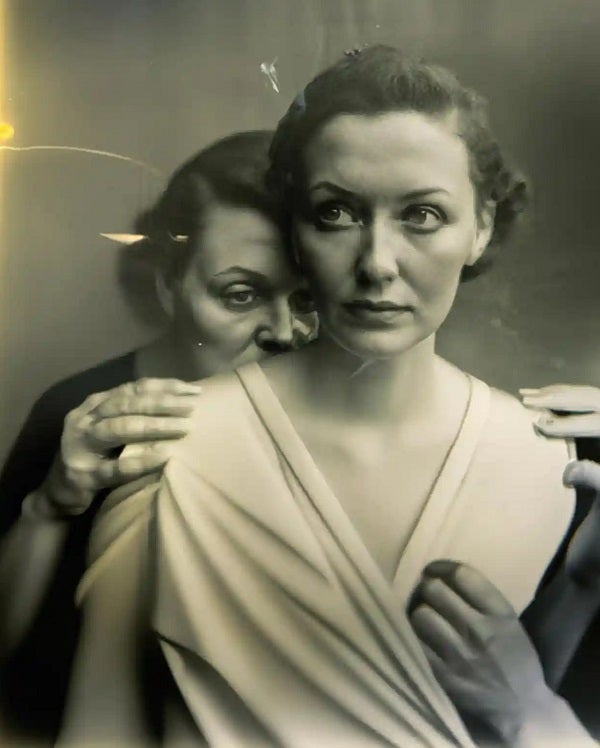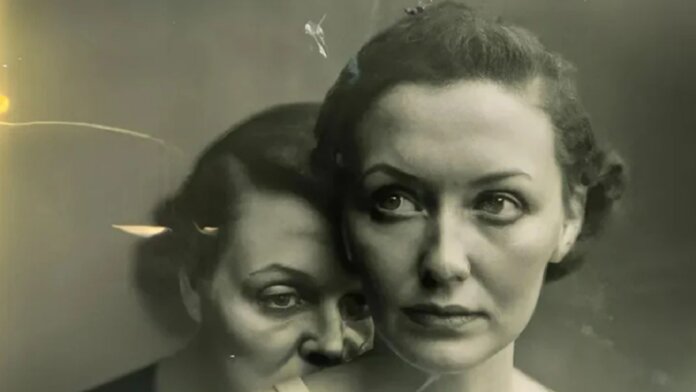The heyday of generative AI is upon us, with millions of images and billions of words per day being produced by models like DALL-E, Stable Diffusion, and GPT-3. By 2025, experts predict up to 90 percent of new online content could be AI-generated. But what does this mean for human creativity? How will our view of art and originality change if the most common way to create something starts with prompting an algorithm?
A German artist felt these questions deserved more attention than they’re getting, so he brought them to light—in quite a memorable way. Boris Eldagsen submitted an entry to the Sony world photography competition, and when he won he revealed that his “photo” wasn’t really a photo, but rather an image generated by an AI. Eldagsen turned down the prize money, suggesting it be donated to a photo festival in Ukraine.
His image, titled “Pseudomnesia: The Electrician,” depicts two women, one hanging on to the other from behind. It won the contest’s creative open category.

“We, the photo world, need an open discussion…about what we want to consider photography and what not,” he said. “Is the umbrella of photography large enough to invite AI images to enter—or would this be a mistake? With my refusal of the award I hope to speed up this debate.”
Eldagsen’s statement is both timely and prescient. Though the debate around AI’s role in art has been going on for years, as the technology advances—and more importantly, becomes accessible to multitudes of people—it’s a conversation that will only get more relevant.
On the cynical side of the spectrum, some would argue that generative AI could dampen, ruin, or overtake human creativity; on the other side of the coin, AI could help creativity flourish, letting anyone who wants to become a creative generalist.
Though Eldagsen misled the photo contest organizers to some degree by submitting an AI-generated photo in the first place, he did confirm that his entry was “co-created” with AI before it was selected as the winner.
“AI images and photography should not compete with each other in an award like this,” he said. “They are different entities. AI is not photography. Therefore I will not accept the award.”
This isn’t the first time an AI art piece has won an award and caused controversy. Last year an image created with Midjourney—an AI program that converts lines of text into realistic graphics—took first place in the digital category at the Colorado State Fair. Though the artist was fully transparent about how his piece had been created, his win provoked criticism from fellow artists who accused him of cheating.
Unfortunately, the number of people who submit AI-generated content to competitions or exhibits and don’t disclose that they had help could far outnumber those who fess up—and herein lies one of the biggest problems we’re grappling with as the technology continues to advance. Being truly creative is hard, and AI is making it easy, and that’s not necessarily a great thing across the board.
ChatGPT, for example, has been used by students to write college essays or do homework, by fraudsters for phishing purposes, and by bad actors to spread disinformation and commit cybercrime. Even if AI-generated content isn’t used for nefarious purposes, maybe it gives creators a bit too easy of a leg up; there’s something to be said for days or months or years of learning a craft or laboring over a work of art.
If a human is involved in generating an image or text with AI, even just by inputting a prompt, how much credit should they get for their work—and who owns it? Is it fair to judge art that was made with AI alongside works conceived of purely by a human brain? Does extensive editing of an AI-generated piece count as mostly human work, or mostly algorithmic work?
These questions don’t yet have widely agreed-upon answers, but they’re going to have to in the not-too-distant future. Use of generative AI tools is only going to grow, so we’ll have no choice but to figure out how their products fit into the larger landscape of art and creativity.
The Sony photography contest’s organizers seem aware that Eldagsen’s stunt can’t be simply be dismissed as silly or irrelevant. “We recognize the importance of this subject and its impact on image-making today,” they stated. “While elements of AI practices are relevant in artistic contexts of image-making, the awards always have been and will continue to be a platform for championing the excellence and skill of photographers and artists working in the medium.”
Image Credit: Boris Eldagsen



